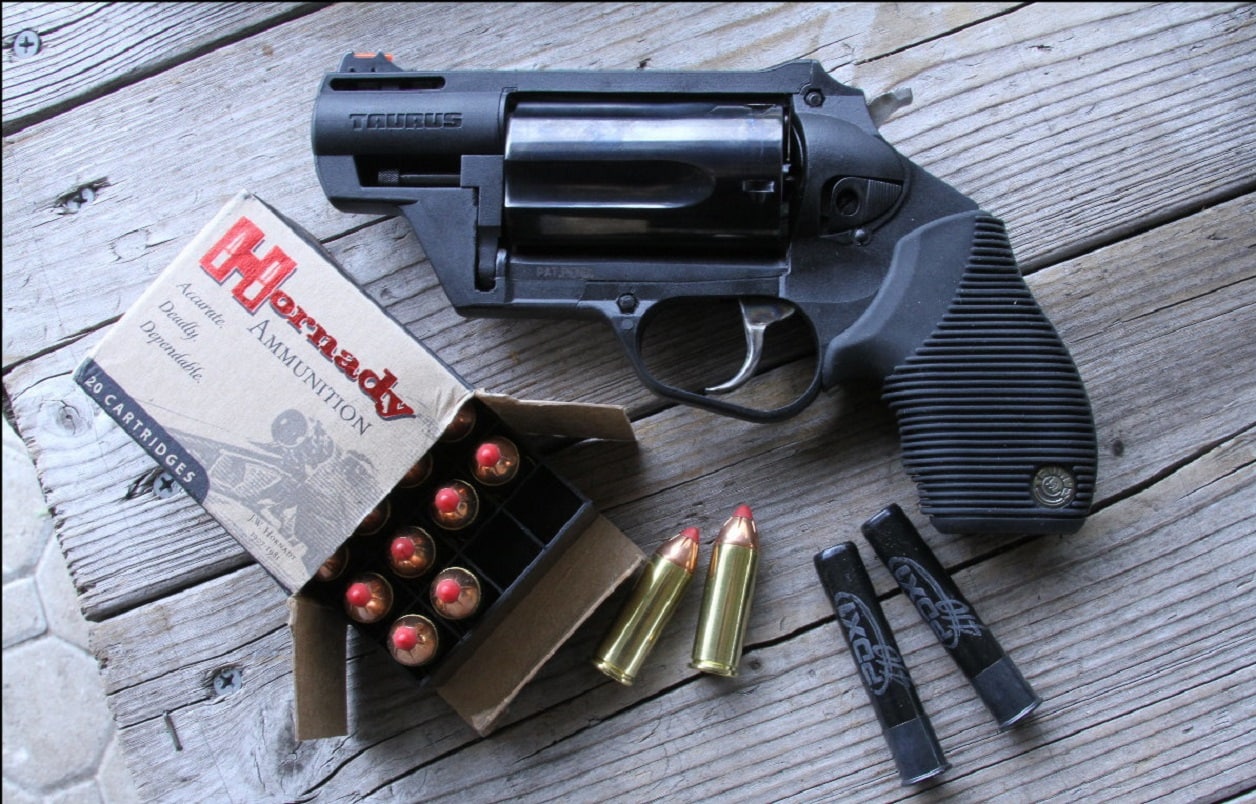Today, semi-automatic pistols are the kings of self-defense handguns. Practically all law enforcement agencies, the military, and other government agencies issue semi-automatic pistols.
Many advantages carry over to civilian use in self-defense, but not all do. The US military has been using automatics since the M1911A1 was introduced more than 120 years ago.
Revolvers Still Count
That doesn’t mean that the revolver is dead as a self-defense weapon, far from it. But as time and things change, the basic tenets of self-defense remain the same. The revolver still has a seat at the table. But we’ll look at the factors for and against each.
Factors Why Semi-automatic Pistols Are Preferred
The factors for changing to semi-automatic pistols are sound. They include:
Increased Capacity: semi-autos carry 15-17 rounds, whereas revolvers mostly carry six. If you add one in the pipe (most people do), that is up to three times the ammunition as a revolver.
Faster Reload Times: Changing magazines in a semi-auto pistol is much quicker than reloading a revolver.
Wider Ammunition Choices: Semi-auto pistols can fire a wider range of ammunition types, offering the shooter greater flexibility.
Improved Accuracy: Many believe that semi-automatic pistols, with their often lighter weight and more ergonomic designs, can be more accurate and easier to control than revolvers, particularly in rapid-fire situations.
Tactical Advantages: Semi-auto pistols’ increased capacity and faster reload times have given LEOs (law enforcement officers) increased firepower and offered tactical advantages in high-risk situations where quick and effective use of force is crucial.
Factors Why Revolvers Are Preferred
Simplicity: The most significant factor for revolvers is simplicity. They have fewer moving parts and fewer operator controls, which means a revolver is less likely to malfunction than a semi-automatic handgun.
The revolver uses the “KISS” principle: “Keep it Simple, Stupid.”
Ease of Firing: With revolvers, a user just needs to aim and pull the trigger to fire the handgun. Many semi-automatic users still believe the myth that it is dangerous to carry a pistol with a round in the chamber. That requires an extra step of jacking the slide back and then aiming. Granted, this is usually found in shooters without military or LEO experience.
Misfire Procedures: While rarer with revolvers, in the event of a misfire, a shooter with a revolver simply has to pull the trigger again. With a semi-automatic, the clearance drill is more difficult as the slide has to be pulled back to extract the non-fired cartridge and insert a new one.
Modularity: Revolvers generally offer more grip selection, allowing the shooter to change the size, configuration, and material of the grip. Shooters can choose a compact grip to conceal the revolver more comfortably or attach a hand-filling full-size grip to help lessen the recoil.
Factors Why Semi-Automatics Aren’t Chosen
Potential for Malfunctions: Semi-autos, with their numerous moving parts, can be prone to malfunctions, such as jams and misfires.
Complexity: Semi-automatic pistols are more complex than revolvers, requiring more maintenance and training to operate safely.
Trigger Pull: Some pistol designs, like single-action pistols, can have a short trigger pull, which may increase the risk of accidental discharge.
Ammunition Size: Semi-automatic pistol cartridges often compromise between size and power, limiting the round’s power.
Factors Why Revolvers Aren’t Chosen
Limited Capacity: Revolvers hold fewer rounds than semi-automatic pistols, usually six rounds, while many semi-autos carry 15 to 17 rounds.
Slower Reloading: Reloading a revolver is slower and more cumbersome than reloading a semi-automatic pistol’s box magazine.
Heavy Trigger Pull: A revolver’s double-action mode often has a longer and heavier trigger pull, affecting accuracy.
In the end, the majority of people will opt for a semi-automatic pistol simply because of the number of rounds it can carry, which can be triple that of a revolver.
But does that knock a revolver right out of the self-defense scenario? Not at all. According to FBI statistics, only 3 to 5 shots are typically fired in a typical self-defense scenario. If you think you are under-gunned with a revolver, you likely are not.
And in self-defense mode, if you are in the street, you are just trying to break contact and get the heck out of Dodge. Home defense is another matter. But the revolver is still a very good self-defense weapon.
About the Author:
Steve Balestrieri is a 19FortyFive National Security Columnist. He served as a US Army Special Forces NCO and Warrant Officer. In addition to writing for 19FortyFive, he covers the NFL for PatsFans.com and is a member of the Pro Football Writers of America (PFWA). His work was regularly featured in many military publications

